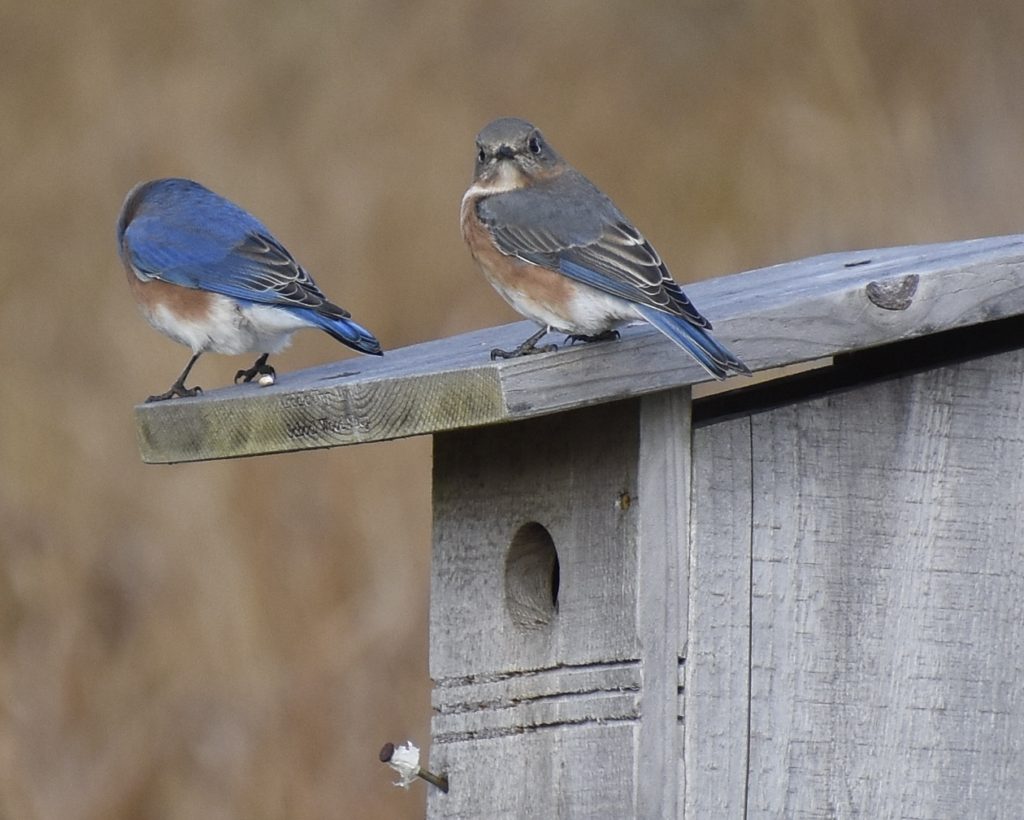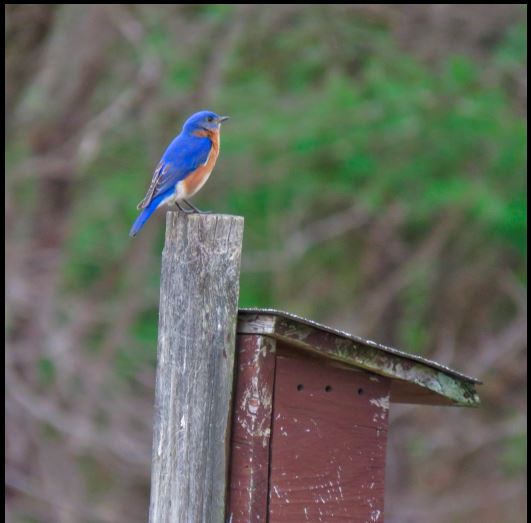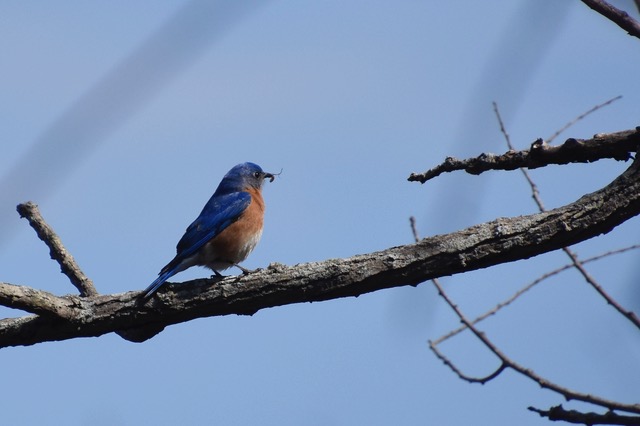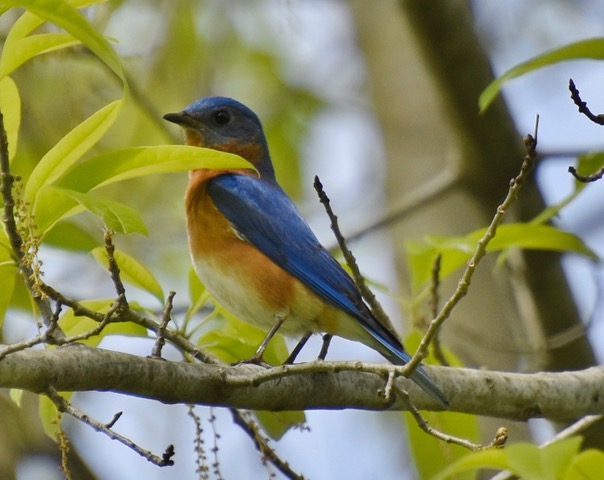


It may be surprising to know that bluebirds were once as common as robins are today. The alarming decline in the numbers of bluebirds prompted the founding in 1978 of the North American Bluebird Society (NABS), a group advocating not only for bluebirds but for all cavity nesting birds. Investigating why bluebirds were declining, NABS determined there were 3 main causes — competition from non-native cavity nesting house sparrows and starlings, habitat loss, and predation.
Starlings are one of the greatest competitors for cavity sites that the bluebird faces today. Starlings were released in New York’s Central Park in the early 1890’s by someone who felt that all birds mentioned in Shakespeare should be established in North America. With no natural predators, starlings went on to become the most common songbird here. They, along with European house sparrows, are aggressive cavity nesters and can easily force a bluebird from a cavity site. The only bird that the bluebird could displace is our little chickadee.
Preferring open spaces, bluebirds have been adversely affected by the loss of meadows to development. Also, the clearing of standing dead trees eliminates the snags that provide nesting sites for bluebirds. Fragmentation of forests promotes predators such as raccoons and black snakes who delight in eating bird eggs. Understanding the plight of the bluebird led NABS to the conclusion that there was a need for artificial nesting sites in the form of nest boxes. The Society has spent decades promoting the installation of nest boxes in backyards, golf courses, farms, and parks. Over the years, through observation and experimentation, NABS developed a box and metal pole with predator guard design that is predator resistant, has an entrance hole too small for starlings, and is amenable to monitoring by humans.
As you may have observed, there are many nesting boxes here at Lumberton Leas. While all the boxes could accommodate bluebirds, most of the poles were wood (which black snakes and raccoons can climb) with no predator guard. Many boxes were placed under trees which predators can climb then drop down onto the box. Last spring and summer (2020), several residents monitored 24 boxes on our campus. Bluebirds nested in 7 boxes with 2 nestings in 2 boxes. In those boxes with bluebirds, 2 nests were destroyed by predators, 5 nests with eggs were destroyed, and 2 nests (with metal poles) possibly fledged 3 young each. Particularly sad was a bluebird who laid white eggs (96% of bluebirds lay blue eggs). She produced 5 white eggs that were taken by a predator, moved to another box and laid 5 more white eggs which were also predated. Hopefully she survived the second attack. Predation also claimed nearly all the chickadees, tree swallows and house wren eggs in our boxes.
In an effort to reduce predation and provide the bluebirds with as much safety as possible, Robert Koch and Mike DeLozier have replaced 12 of the original boxes on wooden poles with boxes on metal poles with predator guards. The new box design is recommended by the New Jersey Bluebird Society, an affiliate of the NABS. The replacement boxes were also moved to open areas away from trees and will be monitored throughout the nesting season.
In 2020, the NJ Bluebird Society reported that 468 bluebirds fledged in Burlington County, a new high for our county. Statewide 5351 young fledged also a new high. Hopefully, we will be able to contribute to this year’s totals.
We would like to thank the Arboretum Committee for funding this project. We would also like to thank Ken Fenimore for the work he did in the Lumberton woodshop. Ken’s craftsmanship and ability to cut the PVC pipe and EMT conduit to specific lengths and to drill precise holes in the PVC caps were invaluable.

